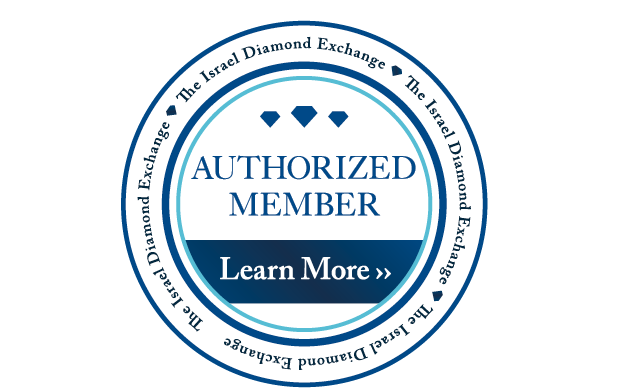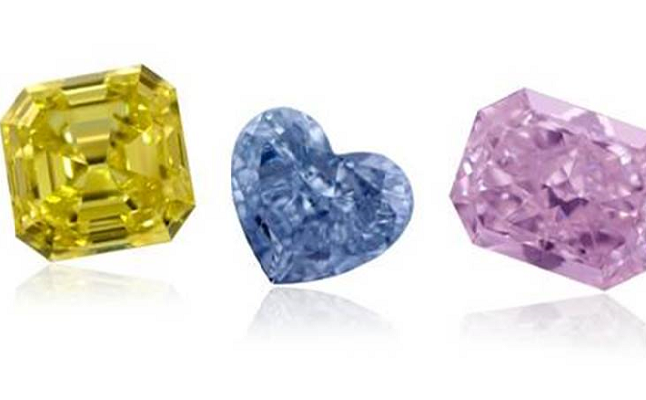Diamond News Archives
- Category: News Archives
- Hits: 1998
Diamond market sentiment improved in January, with firm prices after retailers reported a better-than-expected holiday season. Suppliers are gaining confidence about first-quarter orders as jewelers start to replenish stock after holiday sales.
The RapNet Diamond Index (RAPI ) for 1-carat diamonds rose 2.2% during January. RAPI for 0.30-carat diamonds increased 2.3%, while 0.50-carat stones gained 2.4%. RAPI for 3-carat diamonds edged up 0.5%.
) for 1-carat diamonds rose 2.2% during January. RAPI for 0.30-carat diamonds increased 2.3%, while 0.50-carat stones gained 2.4%. RAPI for 3-carat diamonds edged up 0.5%.
Despite the upswing, RAPI for 1-carat diamonds was down 2.3% from a year ago.
RapNet Diamond Index (RAPI ) ) |
|||
| January Jan. 1 – Feb. 1, 2018 |
Y2Y Changes as of Feb. 1 |
||
| RAPI 0.30 ct. | 2.3% | 2.6% | |
| RAPI 0.50 ct. | 2.4% | -14.3% | |
| RAPI 1.00 ct. | 2.2% | -2.3% | |
| RAPI 3.00 ct. | 0.5% | 4.1% | |
Copyright © 2018, Rapaport USA Inc.
Established higher-end jewelers such as Tiffany & Co., Bulgari, Cartier and Van Cleef & Arpels had a strong holiday season, as did independent retailers with prominent displays of recognized diamond jewelry brands. Overall, jewelers had more effective omni-channel execution than in previous years.
Diamond trading was steady throughout the month, with suppliers filling specific requests as they waited for post-holiday inventory orders from retailers. Chinese dealer demand slowed as store owners completed their buying and focused on selling stock to consumers for the Chinese New Year, which begins on February 16.
Indian manufacturers are raising their polished production after operating at reduced levels since the November Diwali break. Dealer inventory is relatively low, with the number of unique diamonds listed on RapNet having risen just 1% during the month to 1.19 million as of February 1 – 6% below the number of listings a year earlier.
Rough trading remains robust as manufacturers ramp up production. De Beers sold $665 million worth of goods in January, with boxes going for an estimated 6% average premium on the secondary market.
Profit margins are expanding. However, rough prices are expected to rise in the coming months as miners seek to resume growth in an improving polished market, particularly after last year’s sales declines. Positive consumer spending in the US and China is likely to support polished prices, and continues to fuel optimism for 2018.
The post Diamond prices on the rise this year appeared first on MINING.com....
- Category: News Archives
- Hits: 2031

(IDEX Online) – The Israel Diamond Exchange (IDE) today (Monday) officially launched a partnership with Alibaba.com, making it the first diamond bourse to offer polished diamonds and diamond jewelry on the platform, directly from the source. <?xml:namespace prefix = "o" ns = "urn:schemas-microsoft-com:office:office" /?>
Alibaba.com is the leading platform for global wholesale trade, serving millions of buyers and suppliers around the world.
The launch was announced during the International Diamond Week in Israel, which opened today.
Through this partnership, up to 150 IDE members will be able to establish virtual diamond and jewelry stores on the site, under the auspices of the Israeli diamond industry’s official body. With the IDE endorsement, buyers are guaranteed that the supplier offers only natural, conflict-free diamonds and upholds the highest professional standards of quality and reliability.
All IDE stores carry a special symbol indicating that they are “Authorized Members” of the Israel Diamond Exchange. Although the project is just now being officially launched, 80 IDE authorized stories are already in operation....
- Category: News Archives
- Hits: 2020

(Bloomberg) — Anglo American Plc raised the possibility that it could start buying assets in South Africa, the latest sign of how much has changed in two years, when the miner was focused on selling.
“We no longer have any for sale sign,” Norman Mbazima, deputy chairman of Anglo American’s South African unit, said in an interview Monday. “It is possible to invest in South Africa. We have got hope right now.”
After a collapse in commodity prices in 2015, the mining blue-chip talked about selling assets in South Africa, the home of its biggest diamond, iron ore and platinum mines. While the company sold some coal and platinum mines, that policy is now dead. Some of the mines are now cash cows for Anglo as commodity prices reach multi-year highs.
“We like everything that we are in right now,” he said. “If there are opportunities to expand in those, we would.”
The company said any purchases in South Africa would have to be competitive, and deliver the right return on investment. Still, the mood in South African mining is starting to change after Cyril Ramaphosa was elected to head the ruling African National Congress. In Davos, Ramaphosa said urgent action is needed to resolve the impasse between government and business over South Africa’s mining charter.
Anglo’s commitment to South Africa will win support from its biggest shareholders. Billionaire mining executive Anil Agarwal called the country an integral part of Anglo. South Africa’s Public Investment Corp., the second-biggest shareholder, has also long argued for the creation of a domestic mining champion.
“We have no intentions of spinning off Anglo Platinum to a localized company,” Mbazima said of the company’s platinum unit.
Story by Thomas Biesheuvel and Felix Njin; edited by Lynn Thomasson and Liezel Hill.
The post Anglo takes down South Africa sale sign and may even buy appeared first on MINING.com....
- Category: News Archives
- Hits: 1920

Three years after a commodity slump left their finances in shambles, mining companies are swimming in so much cash that investors aren’t sure where the industry will spend it all.
With metals from zinc to palladium trading at multi-year highs, four of the world’s top producers generated combined free cash flow last year of about $87 million a day. Some of the unprecedented windfall is earmarked for dividends, which companies including BHP Billiton Ltd. and Glencore Plc cut or eliminated during the slump.
Where the rest of the money goes — into new mine projects, acquisitions or a bank account — remains one of the big unanswered questions for executives, investors and bankers attending Africa’s biggest mining conference, which begins Monday in Cape Town. Companies may be reluctant to spend too much, given the disastrous results of rapid expansions a few years ago.
Three years after a commodity slump left their finances in shambles, mining companies are swimming in so much cash that investors aren’t sure where the industry will spend it all.
“You can’t give it all back,” said Ben Davis, an analyst at Liberum Capital Markets in London. “There will be some M&A towards the back end of the year. No one wants any new mines, but you have to use this money for something, and it’s not all going as dividends.”
BHP, Glencore, Rio Tinto Group and Anglo American Plc generated $31.9 billion of free cash flow during their 2017 fiscal years, which exceeds their haul during the last commodity boom in 2011, according to analysts estimates compiled by Bloomberg. In 2018, the flow will be an estimated at $31.2 billion, encouraging companies to give more back to shareholders.
Anglo is set to make its first annual dividend since 2015. Rio Tinto, which made a record $2.5 billion interim payout last year and bought back more than $2 billion of shares, is forecast to make its highest ever full-year dividend and buy back another $1.9 billion of stock. Even Glencore, which usually favors deals over dividends, in December promised to double its payout this year.
Still, even after those distributions to shareholders, the industry will have $80 billion in excess cash over the next three years, according to Macquarie Group Ltd. Companies are likely to use some money to pursue growth opportunities, but they don’t have a lot of options for new projects over the next year or so, Macquarie said.
For analysis of slow spending on mining takeovers, click here.
During the last commodity boom, companies built too many mines, borrowed too much and made a lot of bad deals — all of which soured when prices went south. To stay afloat, producers sold assets and cut costs to become leaner, and now they’re reluctant to repeat their mistakes.
Just last month, Rio dropped out of the bidding for a stake in one of the world’s biggest lithium mines, which was valued at...
- Category: News Archives
- Hits: 2102
 (IDEX Online) – Fancy color diamond prices posted a slight rise in the fourth quarter of 2017 from the previous quarter, according to The Fancy Color Research Foundation (FCRF). <?xml:namespace prefix = "o" ns = "urn:schemas-microsoft-com:office:office" /?> There were significant increases in prices of fancy blue diamonds, offset by continued softness in fancy yellow diamonds and stagnation in fancy pink diamond prices, the FCRF said. The Fancy Color Diamond Index in Q4 2017 indicates an overall rise of 0.1% over Q3 2017 for fancy yellow, pink and blue diamonds in all sizes and saturations. Continuing the trend throughout 2017, prices of fancy blue color diamonds in Q4 increased 2.6%, with fancy intense and fancy vivid blues performing best, especially in the 1 carat and 5 carat categories. During the same period, fancy pink and yellow diamond prices declined slightly by 0.4% and 0.6%, respectively. For the fancy yellow color category, the overall 2017 results indicate stabilization following a 2016 decline of 4.0%. On a year-on-year basis, when compared to Q4 2016, the Fancy Color Diamond Index increased by 0.1%, with fancy blue prices up 5.9% and fancy yellow and pink prices down by 1.8% and 0.8%, respectively. In Q4, white diamonds performed relatively better than fancy colored diamonds, with the RAPI™ showing prices of 0.3 carat, 0.5 carat and 1 carat diamonds rising in December 2017 over the first three quarters of 2017. The Fancy Color Diamond Index is published by the non-profit Fancy Color Research Foundation (FCRF), and tracks pricing data for yellow, pink and blue fancy color diamonds in three key global trading centers – Hong Kong, New York and Tel Aviv. FCRF Advisory Board Chairman Eden Rachminov said: “We are seeing a stagnant supply picture of important pink and blue fancy color diamonds. Rare pinks and blues are very hard to come by and continue to command significant premiums. After more than 18 months, we are starting to see some price stability in commercial yellow fancy color diamonds, in line with the performance of white diamonds, driven by lower availability.” ...
(IDEX Online) – Fancy color diamond prices posted a slight rise in the fourth quarter of 2017 from the previous quarter, according to The Fancy Color Research Foundation (FCRF). <?xml:namespace prefix = "o" ns = "urn:schemas-microsoft-com:office:office" /?> There were significant increases in prices of fancy blue diamonds, offset by continued softness in fancy yellow diamonds and stagnation in fancy pink diamond prices, the FCRF said. The Fancy Color Diamond Index in Q4 2017 indicates an overall rise of 0.1% over Q3 2017 for fancy yellow, pink and blue diamonds in all sizes and saturations. Continuing the trend throughout 2017, prices of fancy blue color diamonds in Q4 increased 2.6%, with fancy intense and fancy vivid blues performing best, especially in the 1 carat and 5 carat categories. During the same period, fancy pink and yellow diamond prices declined slightly by 0.4% and 0.6%, respectively. For the fancy yellow color category, the overall 2017 results indicate stabilization following a 2016 decline of 4.0%. On a year-on-year basis, when compared to Q4 2016, the Fancy Color Diamond Index increased by 0.1%, with fancy blue prices up 5.9% and fancy yellow and pink prices down by 1.8% and 0.8%, respectively. In Q4, white diamonds performed relatively better than fancy colored diamonds, with the RAPI™ showing prices of 0.3 carat, 0.5 carat and 1 carat diamonds rising in December 2017 over the first three quarters of 2017. The Fancy Color Diamond Index is published by the non-profit Fancy Color Research Foundation (FCRF), and tracks pricing data for yellow, pink and blue fancy color diamonds in three key global trading centers – Hong Kong, New York and Tel Aviv. FCRF Advisory Board Chairman Eden Rachminov said: “We are seeing a stagnant supply picture of important pink and blue fancy color diamonds. Rare pinks and blues are very hard to come by and continue to command significant premiums. After more than 18 months, we are starting to see some price stability in commercial yellow fancy color diamonds, in line with the performance of white diamonds, driven by lower availability.” ...

